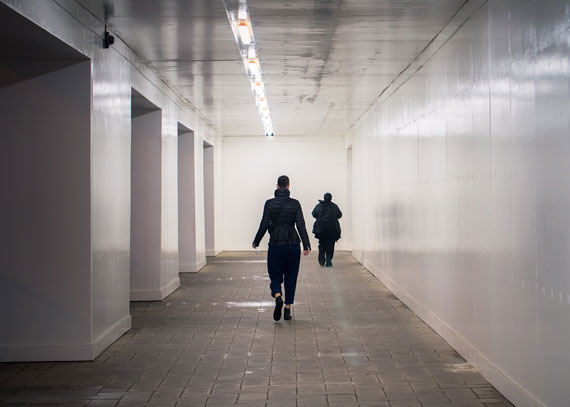Gestalt theory, originating from early 20th-century psychology, emphasizes the human ability to perceive patterns and wholes in chaotic environments. This theory, which asserts that “the whole is greater than the sum of its parts,” has profound implications for various disciplines, including photography. In this blog post, we’ll delve into the principles of Gestalt theory and explore how photographers can harness these concepts to create more compelling and visually engaging images.
Also remember that a Spring Sale for the Cheat Sheets on all the Compositional Elements is ending soon!

What is Gestalt Theory?
Gestalt theory was developed by German psychologists Max Wertheimer, Wolfgang Köhler, and Kurt Koffka. The theory focuses on how people naturally organize visual elements into groups or unified wholes when certain principles are applied. The main principles of Gestalt theory are:
- Similarity
- Proximity
- Closure
- Continuity
- Figure-Ground
- Symmetry and Order
These principles explain how our brains interpret complex scenes, enabling us to recognize patterns and make sense of visual stimuli. In photography, understanding and applying these principles can lead to more impactful and aesthetically pleasing images.
Principle 1: Similarity
Similarity refers to our tendency to group similar elements together. In photography, this principle can be used to create harmony and cohesion within an image.
Application in Photography:
- Color Coordination: Photographers often use color to create a sense of unity. For example, a photograph of a flower field with red and yellow tulips grouped together leverages the principle of similarity in color to create a striking visual effect.
- Shape and Form: Similar shapes and forms within a composition can guide the viewer’s eye and create a sense of order. A series of arches in an architectural photograph can exemplify this principle, leading the viewer’s gaze through the image.
Principle 2: Proximity
Proximity involves grouping elements that are close to each other. This principle helps in establishing relationships between different parts of an image.
Application in Photography:
- Groupings: Positioning subjects close to one another can create a connection or narrative. A photograph of a group of friends standing closely together conveys a sense of unity and togetherness.
- Foreground and Background Interaction: Placing elements at varying distances within the frame can add depth and perspective, helping the viewer understand the spatial relationship between objects.
Principle 3: Closure
Closure is the concept that our minds tend to fill in the missing parts of an incomplete shape or object to perceive a complete form.
Application in Photography:
- Implied Lines: Using elements within the frame to suggest a shape or form can lead the viewer to “complete” the image mentally. A photograph of a broken fence might suggest a continuous line, even if parts of the fence are missing.
- Silhouettes and Shadows: Silhouettes can create powerful images where the mind completes the shape of the subject, enhancing the viewer’s engagement with the photograph.
Principle 4: Continuity
Continuity describes our tendency to follow lines and curves, making it easier to navigate and understand an image.
Application in Photography:
- Leading Lines: Photographers use leading lines to guide the viewer’s eye through the photograph. A road stretching into the horizon or a river winding through a landscape can create a natural path for the viewer’s gaze.
- Flow and Movement: Capturing elements that suggest movement, like flowing water or a winding staircase, helps create a dynamic and engaging image that leads the eye naturally.
Principle 5: Figure-Ground
Figure-Ground is the ability to distinguish an object (the figure) from its background (the ground).
Application in Photography:
- Contrast: Using high contrast between the subject and the background helps the subject stand out. This technique is particularly effective in portrait photography where the subject’s face needs to be the focal point.
- Depth of Field: Blurring the background (bokeh effect) while keeping the subject in focus can help isolate the subject and make it the clear point of interest.
Principle 6: Symmetry and Order
Symmetry and Order refer to our preference for balanced and orderly compositions. Symmetrical compositions are often perceived as harmonious and aesthetically pleasing.
Application in Photography:
- Balanced Composition: Placing elements symmetrically can create a sense of stability and calmness. Architectural photography often employs symmetry to emphasize the precision and order of structures.
- Patterns and Repetition: Repeating elements can create a rhythm in the photograph, leading to a cohesive and pleasing visual experience.
Integrating Gestalt Principles in Your Photography
To effectively integrate Gestalt principles into your photography, consider the following tips:
- Plan Your Composition: Think about how you can arrange elements in the frame to utilize principles like proximity and similarity to enhance your composition.
- Experiment with Different Perspectives: Changing your viewpoint can help you find natural lines and shapes that utilize principles like continuity and figure-ground.
- Focus on Details: Pay attention to small elements that can collectively create a stronger impact, embodying the principle of closure.
- Use Contrast and Light: Play with light and shadows to create depth and highlight the figure-ground relationship in your photos.
- Practice and Analyze: Regularly review your work to see how well you are applying these principles. Experiment and learn from each shot to continually improve your ability to create compelling compositions.
Summary:
Understanding and applying Gestalt principles can significantly enhance your photographic compositions by making them more visually engaging and harmonious. By recognizing how our minds naturally perceive and organize visual information, photographers can create images that resonate more deeply with viewers. So, next time you pick up your camera, consider how you can use these timeless principles to elevate your photography and see the whole picture.
For Further Training on Composition:
Do you ever have trouble remembering all the elements of composition? These popular Composition Cheat Sheets have you covered. With clear, concise information on all the essential elements of composition, you’ll never be unprepared again. They are currently 81% off today for a Spring Sale if you want to check them out.
The perfect companion for any photographer. Print one out whenever you need it. These cheat sheets consolidate crucial composition-related information, allowing you to concentrate on what truly matters – composing striking photographs.
Spring sale ending soon: The Composition Cheat Sheets at 81% Off
Like This Article?
Don't Miss The Next One!
Join over 100,000 photographers of all experience levels who receive our free photography tips and articles to stay current:







Leave a Reply